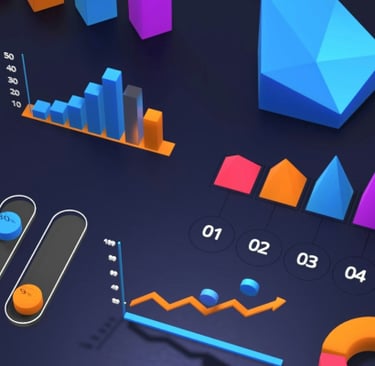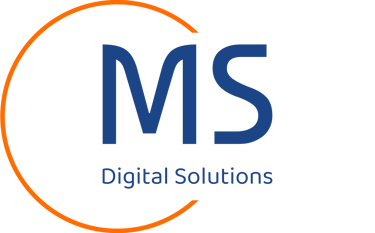Data Research
Focus groups or online research: Which solution is best for your business? In today’s rapidly evolving digital landscape, businesses have more options than ever when it comes to gathering consumer feedback, understanding preferences and making informed decisions.
MARKET RESEARCH
1/28/20255 min read
Focus groups or online research: Which solution is best for your business?
In today’s rapidly evolving digital landscape, businesses have more options than ever when it comes to gathering consumer feedback, understanding preferences and making informed decisions.
Traditional methods such as focus groups, once the standard approach for gathering insights, are now being complemented (and in some cases, replaced) by digital tools like online surveys, A/B testing and advanced data analytics.
The challenge for marketers lies in determining which research method is most suitable for their specific needs, goals and budget. To make this decision, it’s crucial to understand the strengths and limitations of both focus groups and digital methods.


Traditional focus groups: an in-depth, human-centered approach
This method typically involves gathering a small group of participants, usually between 6-10 people, to discuss a product, service, or idea under the guidance of a trained facilitator.
The goal is to explore participants' emotional responses, motivationsand thought processes in a way that other methods might not be able to capture.
Advantages:
Limitations:
- Deep insights
This method offers the opportunity to explore complex emotions, desires and motivations that might not emerge from quantitative methods like surveys.
The moderator can ask probing questions and dive deeper into topics as needed.
- Real-time interaction
The dynamic nature of focus groups allows the moderator to adapt the discussion, exploring different perspectives and follow-up questions as they arise.
- Group dynamics:
The group setting often sparks creative ideas or new concerns as participants engage with each other, which may not emerge in one-on-one interviews or surveys.
- Cost and time
Organizing focus groups involves significant logistical resources. The process can be time-consuming and expensive.
- Small sample size
Focus groups typically involve a small number of participants, making it difficult to generalize the results to a broader population.
- Subjectivity
Responses can be influenced by the facilitator’s style and group dynamics may cause certain voices to dominate, potentially twisting the results.


Digital methods: scalable, data-driven Insights
On the other hand, digital research methods such as online surveys, A/B testing and web analytics, have become indispensable tools in modern digital marketing strategies. These approaches allow for fast, cost-effective and scalable research with larger sample sizes, leading to data-driven decisions.
Digital research tools are especially valuable for businesses seeking actionable, data-driven insights to guide decision-making and optimize digital campaigns.
Advantages:
Limitations:
- Scalability: Online surveys and digital tests can reach large audiences quickly and affordably.
This allows gathering data from a representative sample, which can lead to more reliable insights.
- Real-Time results: The speed of digital tools means businesses can obtain instant feedback.
This can be particularly useful for making timely adjustments to products or marketing campaigns.
- Cost-effective: Compared to focus groups, digital methods are typically much more affordable, especially when dealing with large data sets.
- Advanced analytics: Data-driven tools enable marketers to perform detailed analyses, segment their audience and track behavior across multiple touchpoints to identify trends and patterns.
- Lack of depth: Digital methods often miss the emotional insights focus groups provide.
Online surveys, for example, are limited by the questions posed and cannot probe participants’ feelings in real-time.
- Impersonal: Digital tools are less personal than face-to-face interactions, meaning they might not fully capture the nuances of consumer motivations or attitudes.
- Survey fatigue: With the sheer volume of surveys and digital content people are exposed to daily, response rates can be low and participants may rush through surveys, diminishing the quality of the data.
When to choose which method is the right one?
The decision between traditional focus groups and digital methods depends on your specific goals, budget and timeline. Below are some key considerations for choosing the right approach for your business:
1. For in-depth consumer understanding (focus groups)
If you need a deep dive into consumer attitudes, feelings and motivations, focus groups are the ideal choice. This method is especially useful during the early stages of product development, brand positioning, or when you are testing a new concept.
For instance, luxury brands like Chanel or high-end tech companies often turn to focus groups to ensure their new products align with the desires and expectations of a specific, affluent customer base.
2. For quick, scalable data collection (online surveys & A/B testing)
For businesses needing quick, affordable data from a wide audience, digital methods are an excellent option. Surveys and A/B testing allow you to reach thousands of people in a short amount of time, gathering valuable insights for decision-making.
Companies like Shopify or Amazon use online surveys to collect customer feedback, while A/B testing helps optimize their digital marketing strategies, such as refining user interfaces or improving content delivery.
3. For continuous optimization (digital methods)
If your business is focused on ongoing optimization and rapid testing, digital tools are the way to go. A/B testing, in particular, can help refine ads, website designs,and customer interactions on the fly, ensuring you are always improving your digital presence.
For example, companies like Zalando or Netflix continuously test new features, ads,and interfaces, iterating based on real-time data to enhance user experience and increase engagement.
4. For specific, targeted Feedback (focus groups)
If you need targeted feedback from a specific segment of your audience, focus groups are invaluable. These groups allow you to gather insights from niche demographics, ensuring that you’re tailoring your product or message to the right people.
For instance, a luxury car brand might host focus groups with high-net-worth individuals to fine-tune the features and pricing of a new model before it hits the market.
How to use focus groups and digital methods in digital marketing
While focus groups and digital methods each offer unique strengths, they can also complement one another. Here's how to leverage both effectively:
✔️ Start with focus groups
Use focus groups early in your campaign to get a deep understanding of your audience's feelings and motivations. This is especially useful for new products, branding, or testing complex ideas.
✔️ Leverage digital methods
Once you have gathered initial insights, use digital tools like online surveys and A/B testing to validate findings on a larger scale. Digital methods allow you to gather more data, reach broader audiences,and optimize digital touchpoints such as websites, emails or ads.
✔️ Use A/B testing for continuous improvement:
Use A/B testing to test variations of digital marketing elements, from headlines to visuals, ensuring you continually optimize for higher engagement and better performance.
✔️ Combine both methods
A hybrid approach, where you use both focus groups and digital methods, can give you the best of both worlds. Focus groups provide the emotional, human insights that drive engagement, while digital tools offer the scalable, data-driven insights that inform decisions.
By combining the emotional insights of focus groups with the scale and efficiency of digital tools, businesses can develop more nuanced, adaptive and effective marketing strategies that evolve with consumer preferences.
MS Digital Solutions
Digital marketing, research, and consulting services tailored.
© 2025. All rights reserved.
